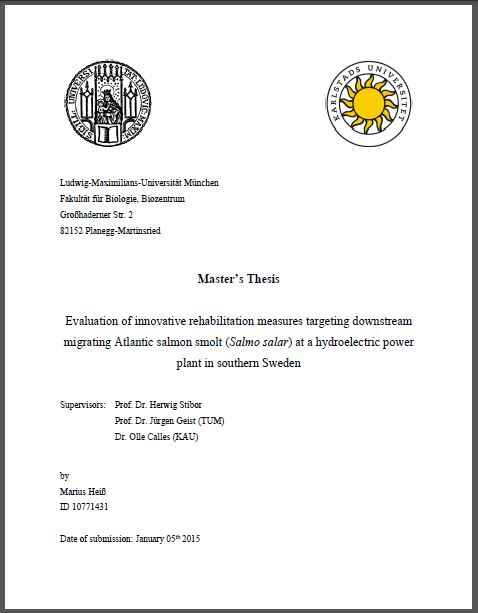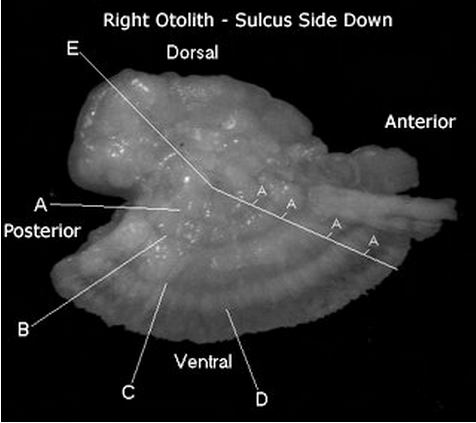Master thesis: Evaluation of rehabilitation measures for downstream migrating Atlantic salmon smolt at a hydroelectric power plant in southern Sweden
Posted by Daniel Nyqvist | Karlstads universitet, Projekt Herting Marius Heiß, a master student who has been working by River Ätran has finished his thesis titled “Evaluation of innovative rehabilitation measures targeting downstream migrating Atlantic salmon smolt (Salmo salar) at a hydroelectric power plant in southern Sweden” . In the abstract he writes:
Marius Heiß, a master student who has been working by River Ätran has finished his thesis titled “Evaluation of innovative rehabilitation measures targeting downstream migrating Atlantic salmon smolt (Salmo salar) at a hydroelectric power plant in southern Sweden” . In the abstract he writes:
“The ecological state of streams and rivers has aggravated on a global scale due to a wide range of anthropogenic influences. The disruption of migratory routes for diadromous fishes by hydroelectric power plants have led to major stock declines over the last century. As a result fishways have been built at many hydroelectric power plants in Europe to improve migration conditions at such obstacles. This measure may improve upstream migration, but typically does not solve corresponding passage problems for downstream migrating fish. Consequently large numbers of downstream migrants, e.g. Atlantic salmon smolt (Salmo salar), are forced to pass turbines on their way to the ocean. There are few rehabilitation measures specifically targeting downstream passage conditions and most of them lack scientific evaluation.
This thesis reports on a radio-telemetric-study to evaluate innovative rehabilitation measures targeting downstream migrating Atlantic salmon smolt, at a hydropower plant in southern Sweden. There had been extensive renovation works at the study site to improve passage conditions for migrating fishes. The conventional turbine rack and a modified conventional trash gate were replaced by a low sloping β-rack adjacent to a full depth bypass channel. Moreover, a nature-like fishway was built at the site.
The results show that the evaluated rehabilitation measures were able to significantly improve downstream passage conditions for Atlantic salmon smolts. Total passage success was high (94%) and bypass efficiency has increased by 68%, whereas the number of smolts passing through the turbines was reduced by 63%. Although there were some issues associated with the monitoring station in the new bypass, the results are promising and so prospective constructions of low-sloping β-racks with full-depth bypasses should lead to improved downstream passage conditions at additional hydroelectric power plants.”
Read the master thesis here.



